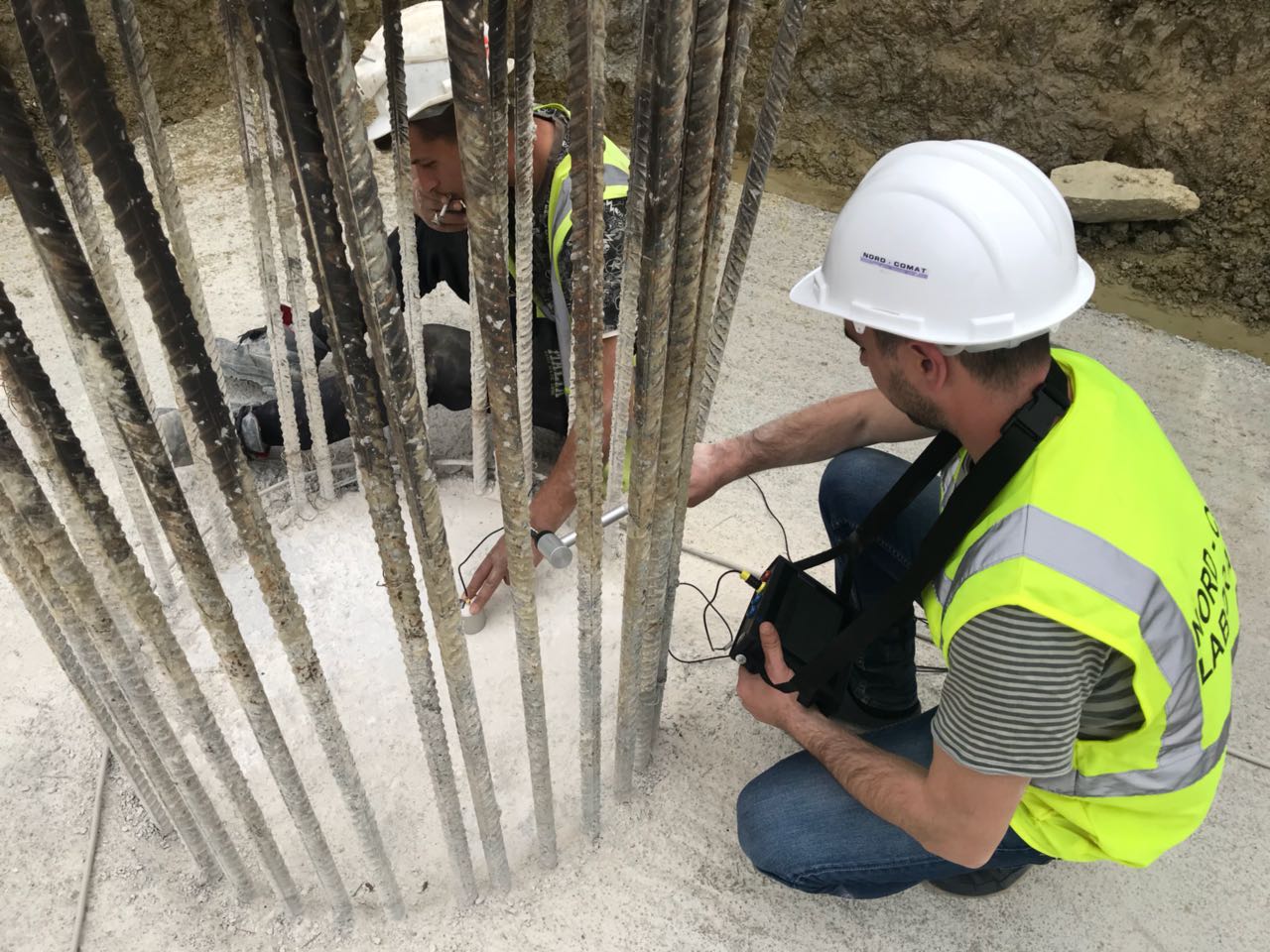ASTM C 1197 – 04
This test method describes an in situ method for determining the deformation properties of existing unreinforced solid-unit masonry. This test method concerns the measurement of in-situ masonry deformability properties in existing masonry by use of thin, bladder-like flatjack devices that are installed in saw cut mortar joints in the masonry wall. This test method provides a relatively non-destructive means of determining masonry properties.
The values stated in inch-pound units are to be regarded as the standard. The values given in parentheses are for information only.
This standard does not purport to address all of the safety concerns, if any, associated with its use. It is the responsibility of the user of this standard to establish appropriate safety and health practices and determine the applicability of regulatory limitations prior to use.




EN 12697-6:2012
This European Standard describes test methods for determining the bulk density of a compacted bituminous specimen. The test methods are intended for use with laboratory compacted specimens or specimens from the pavement after placement and compacting, either by coring or sawing.
This European Standard describes the following four procedures, the choice of which is used being dependent on the estimated content and accessibility of voids in the specimen:
a) bulk density – dry (for specimens with a very closed surface);
b) bulk density – saturated surface dry (SSD) (for specimens with a closed surface);
c) bulk density – sealed specimen (for specimens with an open or coarse surface);
d) bulk density by dimensions (for specimens with a regular surface and with geometric shapes, i.e. squares, rectangles, cylinders, etc.).

EN 12504-2:2012
This European Standard specifies a method for determining the rebound number of an area of hardened concrete using a spring-driven hammer. NOTE 1 The rebound number determined by this method can be used to assess the uniformity of concrete in situ, to delineate zones or areas of poor quality or deteriorated concrete in structures. NOTE 2 The test method is not intended as an alternative for the compressive strength determination of concrete (EN 12390-3), but with suitable correlation, it can provide an estimate of in situ compressive strength. For the assessment of in-situ compressive strength see EN 13791. NOTE 3 The hammer may be used for comparative testing, referenced against a concrete with known strength or against a concrete which has been shown that it has come from a defined volume of concrete with a population verified as conforming to a particular strength class.

ASTM C 900 – 06
This test method covers determination of the pullout strength of hardened concrete by measuring the force required to pull an embedded metal insert and the attached concrete fragment from a concrete test specimen or structure. The insert is either cast into fresh concrete or installed in hardened concrete. This test method does not provide statistical procedures to estimate other strength properties.

ASTM B926 – 09(2017)
This method covers the identification and counting of pinholes, including roll holes, in plain foil using a light table, and inspector with normal 20/20 or corrected 20/20 vision, and a darkened inspection area.
The values stated in inch-pound units are to be regarded as standard. The values given in parentheses are mathematical conversions to SI units that are provided for information only and are not considered standard.
This standard does not purport to address all of the safety concerns, if any, associated with its use. It is the responsibility of the user of this standard to establish appropriate safety, health, and environmental practices and determine the applicability of regulatory limitations prior to use.
This international standard was developed in accordance with internationally recognized principles on standardization established in the Decision on Principles for the Development of International Standards, Guides and Recommendations issued by the World Trade Organization Technical Barriers to Trade (TBT) Committee.
EN ISO 10675-1:2016
Specifies acceptance levels for indications from imperfections in butt welds of steel, nickel, titanium and their alloys detected by radiographic testing. If agreed, the acceptance levels can be applied to other types of welds or materials.
The acceptance levels can be related to welding standards, application standards, specifications or codes. This document assumes that the radiographic testing has been carried out in accordance with ISO 17636‑1 and ISO 17636‑2.
When assessing whether a weld meets the requirements specified for a weld quality level, the sizes of imperfections permitted by standards are compared with the dimensions of indications revealed by a radiograph made of the weld.
PILE ECHO TEST

